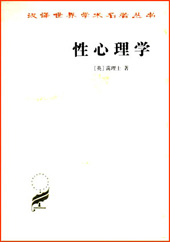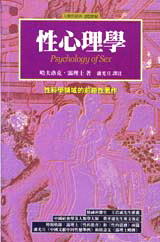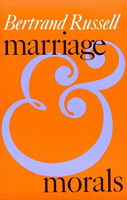赫希菲爾德性學資料庫
Archiv für Sexualwissenschaft
原著:[德]歐文•黑伯樂(Erwin Haeberle);譯者:[中國]彭曉輝;校對者:[美]阮芳賦
Original: Erwin Haeberle [Germany]; Translator: Xiaohui Peng [China]; Reviser: Fang-fu Ruan [USA]
 II.
先驅者
(1896 - 1936)
上一頁
下一頁
返回目錄
返回首頁
II.
先驅者
(1896 - 1936)
上一頁
下一頁
返回目錄
返回首頁

| 1896年 |
義大利精神病學家帕斯誇裏·彭塔(Pasquale Penta)編輯第一本完全專注於性問題的科學雜誌:《Archivio delle Psicopatie Sessuali》。 英國私家學者哈夫洛克·靄理士(Havelock Ellis)開始撰寫“性心理學研究錄”(Studies in the Psychology of Sex,其末卷完成於1928年)。他的性心理學研究錄因不能在英國出版,故而在美國和德國(以譯本)出版。英國讀者終於首次知曉靄理士,是通過靄理士的“不會造成傷害的”小品文集《論生活與性》(On Life and Sex)。 靄理士(1859-1939)及其著作《性心理學》中譯本(左:大陸;右:臺灣) |
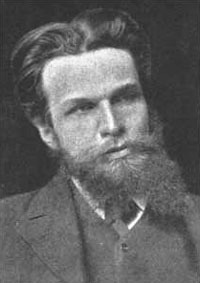 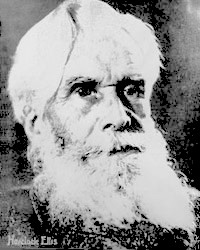
|
| 1897年 | 柏林醫生馬格納斯·赫希菲爾德(Magnus Hirschfeld)創建“科學的人道主義委員會”(Scientific Humanitarian Committee)——世界上第一個“同性戀權利”組織。該委員會旨在廢止德國反同性戀刑法第175條款-懲罰男性間性接觸的法律條款。為支撐這個委員會,赫希菲爾德主編著“中間性論壇年鑒”(Yearbook for Intermediate Sexual Stages,1899-1923)。[1997年在柏林該委員會100周年紀念慶典上,舉辦了大型展覽“同性戀激進主義100年”(One Hundred Years of Gay Activism)]。 |
赫希菲爾德(1868-1935) |
|
赫希菲爾德的競爭對手、柏林醫生亞伯特·莫爾(Albert Moll)發表《性欲調查》(Investigations Concerning the Libido Sexualis)專著。 莫爾(1862-1939) |
| |
| 1902年 | 在阿爾佛雷德‧布拉斯科(Alfred Blaschko)和亞伯特‧奈瑟(Albert Neisser)等人的倡議下,“德國對抗性病協會(German Society for the Fight Against Venereal Diseases)在柏林創建。 | |
| 1903年 | 法國作家雷米·德·古爾蒙(Rémy de Gourmont,1858-1915)發表普及讀物《性愛的自然哲學》(Physique de l'amour),其中含有動物性行為的描述和解釋。 | |
|
1903 -04年 |
馬格納斯·赫希菲爾德開始進行同性戀統計學調查。由於抱怨不斷,該調查研究被法律行動所終止。 | |
| 1904年 |
內分泌學家尤金·斯坦納赫(Eugen Steinach)先於布拉格、後於維也納研究性激素對動物和人體發育的效應。通過性腺移植的方法,他成功地使雄性老鼠雌性化和雌性老鼠雄性化。 尤金·斯坦納赫(1861-1944) |
|
| 在維也納,人種學者弗裏德瑞克·瑟咯門·克蕘斯(Friedrich Salomon Krauss)開始出版年鑒《人類繁衍》(Anthropophyteia)。這個年鑒(10期主刊加大量的增刊)包括他親自在巴爾幹半島收集的很多有關性的民俗學素材。 他因而成為“人類性學”先驅,其成果獲得了西格蒙德·佛洛德(Sigmund Freud)、愛文·布洛赫(Iwan Bloch)、馬格納斯·赫希菲爾德、弗朗茨·博厄斯(Franz Boas)以及其他許多學者的高度讚譽。可是,到了1913年,由於受到各種各樣的有關淫穢罪的審判,他最後受到了毀譽性的打擊,其往後的學術生涯受到了極大的削弱,甚至於作為私人學者也步履艱難。 |
克蕘斯(1859-1938) | |
| 1905年 |
弗瑞茲·施奧丁恩(Fritz Schaudinn)發現導致梅毒的有機體螺旋菌蒼白螺旋體(Treponema pallidum)。 施奧丁恩(1871-1906) |
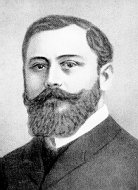
|
| 瑞士精神病學家奧伽斯特·福勒爾(Auguste Forel )發表專著《性問題》(The Sexual Question),該書喚起了順應時代的革命呼聲(廢止大多數有關性的法律和贊成同性性伴結婚等等)。福勒爾慎重地把醫學觀點與社會-政治觀點柔和在一起。他的實行有良好預期的“優生”(即通過避免遺傳性疾病達到主動改善人類遺傳素質)的提議不幸攜帶著某些(未被認可的)極權主義“人種衛生學”政策的胚芽,諸如後來由納粹頒佈的改良人種的政策就是一個極端的案例。 |
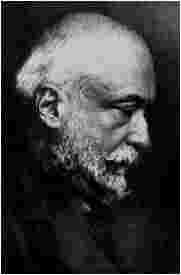
福勒爾(1848-1931) | |
| 海倫·斯托克(Helene Stöcker)與其他學者一起創建“保護母親協會”(Bund für Mutterschutz),致力於保護未婚母親和私生子權利的法律平等。其支持者、皮膚科醫生馬克斯·馬庫斯(Max Marcuse)稍後成了《性科學雜誌》(Zeitschrift für Sexualwissenschaft)的編輯。 | 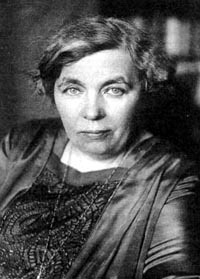
斯托克(1869-1943) |
| 維也納醫生西格蒙德·佛洛德(Sigmund Freud)發表“性學三論”(Three Essays on the Theory of Sex)。在書中,他描述了人的性心理“正常”發展過程,也描述了“倒錯(perversions)”-即與規範不相符的行為。他的理論基於心理分析學說(即精神或心靈測試)。按照佛洛德的學說,“性驅力”要經歷一個“成熟”的過程,其中不同的“驅力部分”在“性心理發育(genitality,【心】——譯者注)”的成熟過程中,會變為潛意識。個人的“性驅力”成熟的三個主要時期是:1.口欲期;2. 肛門性欲期;3.生殖器性欲期。在此之後的兒童期,也存在著“潛伏期”,即性驅力處於蟄伏狀態,直到青春期才開始再度蘇醒。 | 
佛洛德(1856-1939) | |
| 1906年 |
保羅•艾利希(Paul Ehrlich )和日本合作者秦佐八郎 (Sachahiro Hata,1873-1938)開發出第一種有效的梅毒醫學治療方法[用一種叫“撒爾佛散(Salvarsan”)的方法]。 美國無政府主義者、女權主義者和早期婦女權利和生育控制的宣導者艾瑪·金曼(Emma Goldman)創辦雜誌《大地》(Mother Earth),刊載有關政論性和哲學文章,也接受做母親的作者撰寫的小說等文學類投稿。 |

艾利希(1854-1915) |
| 1907年 | 柏林醫生愛文·布洛赫(Iwan Bloch)發表著作《我們時代的性生活》(The Sexual Life of Our Time)。書中,他要求建立性科學(Sexualwissenschaft),要按照這門學科自身規律把它作為一門科學學科來建設,即按照自然科學也按照人文科學的規律整合成一門學科。曼替伽紮(Mantegazza)仍稱之為“愛(love或amore)”的東西,自那時以後在科學文獻中永遠地變成了“性愛(sexuality)”。 |
布洛赫(1872-1922) |
| 1908年 | 馬格納斯·赫希菲爾德編輯第一本性科學雜誌(Zeitschrift für Sexualwissenschaft)。這本月刊生存了僅一年(12期)。它不僅包括醫學論文投稿,而且刊載科學家和學者範圍廣泛的撰稿,從人類學家、犯罪學家到哲學家、歷史學家的稿件,所及論題寬泛。 | |
| 1909年 | 亞伯特·莫爾發表《兒童的性生活》(The Sexual Life of the Child),書中,莫爾無視佛洛德的精神分析理論,認為這個理論並不科學。在他的這本專著裏,莫爾第一次提出人體性反應的4-相週期劃分模式:1. 性欲快感激發期;2. 快感平穩感受期;3. 性欲快感顛峰期;4. 驟然釋放期。 | |
| 日本軍醫、作家森鷗外[Ogai Mori為筆名,其真名叫林太郎(Rintaro Mori)——譯者注]發表自傳體著作《性生活》(Vita Sexualis,其全集共38卷——譯者注),書中,他描述了自己青春期獨處時、清醒時、甚至冷靜時的性體驗。(他也以不參雜任何道德判斷的筆調記錄了同學的同性戀事件。)該書出版不久就被查禁。 |
森鷗外(1862-1922) | |
| 1910年 | 馬格納斯·赫希菲爾德引入術語“異裝癖者”(transvestit),以把這類人與同性戀者相區分。 | |
| 1911年 | 亞伯特·莫爾發表《性科學手冊》(Handbuch der Sexualwissenschaften),其中不僅收錄了他自己撰寫的論文,而且選用了諸如靄理士等其他性科學家撰寫的文章。 | |
| 1912年 | 愛文·布洛赫開始編輯出版《專論性科學全集》(Handbuch der gesamten Sexualwissenschaft in Einzeldarstellungen)。首卷為《賣淫‧卷一》由他自己撰寫;第二卷為《男女同性戀》,由赫希菲爾德撰寫,由布洛赫撰寫的第三卷(《賣淫‧卷二》)在他逝世後才出版。布洛赫于1922年英年早逝,從而結束了其雄心勃勃的出版計畫。 | |
| 1913年 |
在柏林,瑪格納斯·赫希菲爾德、愛文·布洛赫、亞伯特·優愣伯格(Albert Eulenburg)以及其他性學家創立首個“性科學與優生學醫學會”(Ärztliche Gesellschaft für Sexualwissenschaft und Eugenik)。 亞伯特·莫爾也在柏林創立“國際性研究學會”(Internationale Gesellschaft für Sexualforschung)。 |
|
| 1914年 |
瑪格納斯·赫希菲爾德出版其不朽巨著《男女同性戀》(Die Homosexualität des Mannes und des Weibes,1067頁)。 愛文·布洛赫和亞伯特·優愣伯格再一次創立《性科學雜誌》(Zeitschrift für Sexualwissenchaft)。 |
|
| 在美國,洛克菲爾(Rockefeller)家族對性研究有了興趣,並開始尋求支持這項研究的途徑。隨後的40年裏,該家族先通過美國社會衛生局(Bureau of Social Hygiene),隨後通過國家研究委員會[the National Research Council (醫學分會-性問題研究委員會).]提供了堅實的資金資助。可是,主管基金的科學家們對這個研究課題感到不自在,拒絕把資助基金投向性學研究,而是投向了“無可爭議的”基礎生物學研究。他們也未能建立性科學圖書館和未收集或未出版一本性科學雜誌、甚或未發表一部性學參考書目。此外,他們拒絕邀請靄理士、甚至當瑪格納斯·赫希菲爾德及其同行的性科學家威廉·賴希(Wilhelm Reich)、恩斯特·格拉芬伯(Ernst Gräfenberg)、伯爾哈德·斯伽皮爾柔(Bernhard Schapiro)和漢斯·萊菲爾特(Hans Lehfeldt)流亡到美國時,也拒絕支持或拒絕會見他們。終於,洛克菲爾基金會至少為阿爾弗雷德 C.金西(Alfred C. Kinsey)的研究提供了幾筆研究資金。可是,這種資助不久也在來自保守政治和宗教勢力的壓力下被撤銷。 | ||
| 1916年 |
瑪格麗特·桑格(Margaret Sanger)與其妹在紐約布魯克林開辦節育診所。該診所幾乎馬上以“妨害公眾安寧”被當局查封。桑格姊妹因違反紐約州反淫穢法而被判刑,在監獄工廠服役30天。她置這些挫折和其他相似的艱難於不顧,仍積極地執著於家庭計畫運動達數十年之久,成為不僅在美國而且在國際上的家庭計畫運動中是最富影響力的組織者。欲瞭解桑格自傳摘錄,請點擊此處。 桑格(1879-1966) |
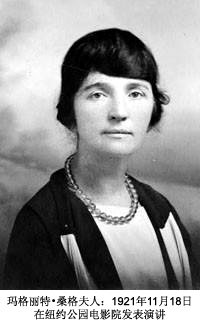 |
| 1919年 | 瑪格納斯·赫希菲爾德在柏林開辦第一個“性科學研究所”(Institute for Sexology)。 |
| 1921年 |
在布拉格,作為建立性科學研究所的第一步,查理斯大學為皮膚病學家裴索卡(Pecirka)教授提供一個性病理學教授職位。裴索卡在柏林從師於赫希菲爾德,後來他意外逝世。於是,該大學於1929 - 1930年間選派另一位年輕皮膚病學家約瑟夫·黑尼(Josef Hynie)到赫希菲爾德研究所接受培訓。黑尼成功地完成了其前任未竟事業。他于1974年在該大學性科學研究所所長任上退休(他被譽為捷克斯洛伐克的性科學奠基人——譯者注)。 在莫斯科,教育家維拉·斯基密特(Vera Schmidt)建立“兒童之家”。她遵循精神分析學原理,進行反權威主義的、正面的性教育。這種性教育也意欲不干涉手淫和不干涉相互的性探查。 |
黑尼(1900-1989) |
| 1923年 |
馬克斯·馬庫斯(Max Marcuse)出版《性學袖珍詞典》(Handwörterbuch der Sexualwissenschaft),其中選錄了包括佛洛德等許多傑出性學家撰寫的詞條。 馬庫斯(1877-1963) |
|
| 1926年 |
在柏林,亞伯特·莫爾組織召開“第一屆國際性學研究大會”(International Congress for Sex Research)。開幕式在德國國會大廈(Reichstag)舉行。“第二屆國際性學研究大會”隨後於1930年在倫敦舉行。 荷蘭婦科醫生斯爾島爾·亨墜克·範·德· 維爾德(Theodor Hendrik van de Velde)發表《理想的婚姻》(Ideal Marriage),為非常受歡迎的成人性教育讀本,它旨在鼓勵男女在性關係內破除性禁忌和張揚性感覺。 瑪格納斯·赫希菲爾德開始出版五卷本的《性知識》(Geschlechtskunde),其末卷于1930年發行。 |
維爾德(1873-1937) |
| 1928年 | 在丹麥醫生J. H.朗巴克(J. H. Leunbach)的支持下,瑪格納斯·赫希菲爾德在哥本哈根組織召開國際性學大會,借此機會他創立“世界性改革聯盟”(Weltliga für Sexualreform),聯盟主席是赫希菲爾德、靄理士和福勒爾。(隨後的世界性改革聯盟大會:1929年於倫敦、1930年於維也納和1932年於布爾諾。)此外,該聯盟正式主張兩性的法律與社會地位的平等,主張避孕和性教育的權利,主張對性立法的改革(“無受害人的”性犯罪的合法化)。 | 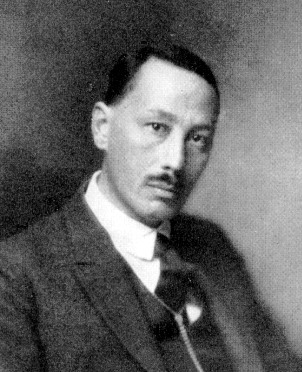
朗巴克(?-?) |
| 1929年 |
人種學家布諾耐咯·馬林諾夫斯基(Bronislaw Malinowski)出版專著《美拉尼西亞西北部野蠻人的性生活》(The Sexual Life of Savages in North-West Melanesia,美拉尼西亞為西南太平洋群島,詞原意為“黑人群島”——譯者注)。該人類學考察報告描述該群島的人較少有性壓抑,並且後來由瑪格麗特·米德(Margaret Mead)及其它學者提供的後續考察報告,指出該群島土著的性態度與“西方人的”性態度差異顯著,這一事實引人好奇和影響巨大。 凱薩琳 B. 大衛斯(Katherine B. Davies)出版巨型調查報告《來自兩萬兩千例婦女的性生活因素》(Factors in the Sex Lives of Twenty-Two Hundred Women),該調查文獻表明,多數婦女對她們婚前與婚後的性行為、手淫以及使用避孕藥具感到滿意。 西班牙醫生、內分泌學家哥瑞高利·馬拉農(Gregorio Marañon)出版《中間性者的內分泌》(Los estados intersexuales)。通過修訂與擴充,該書成為他於1930 年完成的最主要著作《人類的性進化及其中間性階段》(La evolucion de la sexualidad humana y los estados intersexuales)的基礎。 |

馬林諾夫斯基(1884-1942)-S. I. Witkiewicz攝於1911年 米德(1901-1979) |
| 在曼谷,法國裔法官雷內·李昂(René Guyon)開始撰寫激進的專著《性倫理研究》(Studies in Sexual Ethics)。他在20世紀早期被泰國政府稱為泰蘭德(Thailand-為泰國的意思,估計是泰國政府對他的昵稱——譯者注。)他為所有男女主張性滿足的權利,也主張所有男女沒有對他人有性暴力的權利。直到1944年完成的全部9卷中,只有6卷用法語發表(也有兩卷用英語發表)。在1940年代,李昂也抨擊國際聯盟(The League of Nations)涉及到性方面的政策,認為對人性是一種壓制,而且在1951年,當他譴責聯合國背叛了自己的人權宣言(Universal Declaration of Human Rights)時,再一次批評了國際聯盟的性方面的政策。 |
李昂(1876 -1963) | |
|
日本性科學先驅山本宣治(Senji Yamamoto)被右翼極端主義者殺害。 山本宣治(1889-1929) |
||
|
英國哲學家伯特蘭·羅素(Bertrand Russell)出版專著《婚姻與道德》(Marriage and Morals),該書贊成更多與更好的性教育,贊成婚前與婚外性行為的權利,也贊成無子女夫婦要求離婚的權利。與其妻子朵拉·羅素一起,他還開辦了一所男女合校的學校,給予年輕學生充分的自由。所有這些舉動,後來在美國都用作反對他的由頭,在那裏他當場被人拒絕聘為教授,也許校方認為聘用他相當於設置了一個“下流教授職位”。(拒絕聘用羅素的大學為紐約城市大學,劍橋大學也曾拒絕聘任他。他于1950年獲得諾貝爾文學獎。——譯者注) 羅素(1872-1970)及《婚姻與道德》 |

| |
| 1930年 | 英國醫生海倫娜·賴特(Helena Wright,1887-1982)發表專著《婚姻裏的性因素》(The Sex Factor in Marriage)。在積極投身於家庭計畫的運動中,直到二戰後很久了,賴特還一直執掌著英國性醫學的牛耳。 | |
|
1930 -32年 |
其公共形象遭到納粹踐踏的瑪格納斯·赫希菲爾德在德國不再有安全保障。他因而開始周遊世界,用數百場演講來介紹他的新科學(他先後到過美國、日本、中國、印度、埃及、巴勒斯坦和希臘)。自此後他就沒有返回德國。 | |
| 1931年 | 在蘿拉·畢姆(Laura Beam)的協助下,婦科醫生羅伯特·拉圖·迪金遜(Robert Latou Dickinson)發表了調查報告《千樁婚姻》(A Thousand Marriages)。根據問卷調查,這部調查報告分析了1000例(1200多例——自《中國性科學百科全書》.1998版,第31頁——譯者注)已婚婦女的性生活,發現有一半已婚婦女對婚姻性生活感到不滿意。作為一位避孕的狂熱支持者,迪金遜同樣利用其巨大的影響力來幫助其他性科學家。 | 迪金遜(1861-1950) |
| 1933年 |
5月6日,一群納粹打手搶劫赫希菲爾德性學研究所,隨後當局立即查封了該研究所。研究所圖書館被人公然地焚毀,大火燒了4天后,赫希菲爾德的著作連同其他“德國猶太小子”作者的書籍,像佛洛德、布萊希特(Brecht,貝托爾特·布萊希特,德國詩人和戲劇家,1898-1956)、福伊希特萬格[Feuchtwanger,利翁·福伊希特萬格,出生于德國的作家,因歷史小說醜陋的公爵夫人(1923年)而聞名,1884-1958]、魏菲爾(Werfel
,弗朗茲·魏菲爾,奧地利作家,1890-1945)和茨韋格(Stefan
Zweig,阿諾德·茨韋格,德裔作家,猶太複國主義者,1887-1968)的著作,都被付之一炬。德國大多數性科學家因為都是猶太人而失去了工作機會。他們四處逃散流亡。赫斯菲爾德於1935年猝於法國;馬克斯·馬庫斯、恩斯特·克裏莽斯基(Ernst
Klimowsky)和菲力克斯·熱勒博爾(Felix
Theilhaber)逃亡到巴勒斯坦;博爾哈德·斯伽皮爾柔(Bernhard
Schapiro)經由瑞士逃到美國、最後去了以色列;西格蒙德·佛洛德和夏洛特·沃爾夫(Charlotte
Wolff)逃到英國;漢斯·萊菲爾特(Hans
Lehfeldt)和馬克斯·惠德恩(Max
Hodann)、威廉·賴希先逃到斯堪的納維亞(Scandinavia,
瑞典、挪威、丹麥、冰島的泛稱——譯者注),然後逃到美國;路德維格·拉維-愣次(
Ludwig
Levy-Lenz )逃往埃及;漢斯·萊菲爾特(Hans
Lehfeldt)和恩斯特·格拉芬伯逃到美國; |
熱勒博爾 (1884-1956)
拉維-愣次 (1889-1966)
伊萬道斯基 (1896-1996)
|
| 1936年 | 威廉·賴希(Wilhelm Reich)出版其擴充了的著作《性革命》(Die Sexualität im Kulturkampf)(第一版於1930年出版;後又用英語重寫於美國-《性革命》)。賴希結合精神分析學說和馬克斯的哲學理論撰寫該著作。然而,他撰寫著作的風格逐漸把對生物學的興趣放到了優先的位置。他後期著作的這一典型特徵是於1942年完成的《性高潮的功能》(The Function of the Orgasm)一書,書中他宣稱發現了“生命力能量”(orgone energy)。的確,他建立了一個特殊的生命力能量研究所。賴希也再次提出人體性反應的4相模式:1. 機械性緊張期;2. 生物電荷載期;3. 生物電釋放期;4. 機械性鬆弛期。 |
賴希(1897-1957) |
本中文譯版於2006年4月4日翻譯完畢
返回首頁
 II. Pioneers (1896 - 1936)
II. Pioneers (1896 - 1936)
| 1896 | The Italian
psychiatrist Pasquale Penta edits the first scientific journal devoted
entirely to sexual questions: "Archivio delle Psicopatie Sessuali".
The English private scholar Havelock Ellis begins his "Studies in the Psychology of Sex" (last volume 1928). Since they cannot be published in England, they appear in the USA and (in translation) in Germany. The English reading public first comes to know Ellis mostly through his "harmless" collection of essays On Life and Sex. |
|
| 1897 | The Berlin physician Magnus Hirschfeld founds the "Scientific Humanitarian Committee", the world's first "Gay Rights" organization. Its goal is the repeal of the German anti-homosexual law § 175 which punishes sexual contact between men. For the committee Hirschfeld edits the "Yearbook for Intermediate Sexual Stages" (1899-1923). (The centennial of the committee - 1997 - is celebrated in Berlin with a large exhibition "One Hundred Years of Gay Activism" |
|
| Hirschfeld's rival, the Berlin physician Albert Moll, publishes his "Investigations Concerning the Libido Sexualis". |
| |
| 1902 | At the initiative of Alfred Blaschko, Albert Neisser and others the "German Society for the Fight Against Venereal Diseases" is founded in Berlin. | |
| 1903 | The French writer Rémy de Gourmont publishes his "Physique de l'amour" (The Natural Philosophy of Love), a popular book containing descriptions and interpretations of animal sexual behavior. | |
| 1903 -04 |
Magnus Hirschfeld begins his statistical surveys on homosexuality. As a result of complaints, they are soon terminated by legal action. | |
| 1904 | The endocrinologist Eugen Steinach in Prague, later in Vienna, studies the effects of sex hormones on the development of the animal and human body. By means of gonadal transplantation, he succeeds in feminizing male rats and masculinizing female rats. |
| In Vienna, the ethnologist Friedrich Salomon Krauss begins publication of his yearbook "Anthropophyteia". This work (10 main volumes plus a number of complementary volumes) contains a wealth of folkloristic material about sex which Krauss had personally collected in the Balkans. He thus had become a pioneer of "ethno-sexology" whose work was greatly appreciated by Sigmund Freud, Iwan Bloch, Magnus Hirschfeld, Franz Boas and many others. However, by 1913, as a result of various obscenity trials, he is financially ruined, and his further career, even as a private scholar, is seriously curtailed. | ||
| 1905 | Fritz Schaudinn discovers the spirochete Treponema pallidum, a bacterial organism which causes syphilis. | |
| The Swiss psychiatrist Auguste Forel publishes his book "The Sexual Question" which raises demands that are revolutionary for its time (abolition of most sex laws, marriage for same-sex couples etc.). Forel deliberately combines medical and socio-political viewpoints. His well-intended proposal to practice "eugenics" (i.e. the voluntary genetic improvement of the human race by avoiding the transmission of hereditary diseases) unfortunately carries some (then unrecognized) seeds of totalitarian "racial hygiene" policies such as those later enacted by the Nazis. | ||
| Helene Stöcker and others found the Association for the Protection of Mothers ("Bund für Mutterschutz"), which fights for the protection of unmarried mothers and for the legal equality of "illegitimate" children. Her supporter, the dermatologist Max Marcuse, later becomes the editor of the "Zeitschrift für Sexualwissenschaft" (Journal for Sexology). |
| The Viennese physician Sigmund Freud publishes his "Three Essays on the Theory of Sex". In this work he describes the "normal" development of human sexuality as well as the "perversions", i.e. behaviors which do not correspond to the norm. His theory is based on the doctrine of psychoanalysis (i.e. examination of the mind or soul). According to Freud, the "sex drive" undergoes a process of "maturation" in which various "partial drives" become subordinated to the goal of mature "genitality". The three main phases of his process are: 1. Oral phase, 2. anal phase, 3. phallic phase. In late childhood there also is a "latency phase" in which the sex drive lies dormant until it reawakens during puberty. | ||
| 1906 | Paul Ehrlich and his Japanese collaborator Sahachiro
Hata develop the first effective medical treatment of syphilis (by means
of a compound called "Salvarsan").
The American anarchist and feminist Emma Goldman, an early advocate of women's rights and birth control, founds her magazine "Mother Earth" which offers political and philosophical essays as well as literary contributions by modern writers of fiction. |
|
| 1907 | The Berlin physician Iwan Bloch publishes his study "The Sexual Life of Our Time". In it he demands the establishment of sexology ("Sexualwissenschaft") as a scientific enterprise in its own right, combining the methods and insights of both the natural and the cultural sciences. What Mantegazza had still called "love" (amore), from now on permanently turns into "sexuality" in the scientific literature. | |
| 1908 | Magnus Hirschfeld edits the first Journal of Sexology ("Zeitschrift für Sexualwissenschaft"). As a monthly publication, it survives for only one year (12 issues). It contains not only medical contributions, but articles written by a wide spectrum of scientists and scholars, from anthropologists and criminologists to philologists and historians. | |
| 1909 | Albert Moll publishes his study "The Sexual Life of the Child", disregarding Freud's psychoanalytic theory, which he considers to be unscientific. In this book, Moll for the first time proposes a 4-stage description of the human sexual response: 1. the onset of voluptuousness, 2. the equable voluptuous sensation, 3. the voluptuous acme, 4. the sudden decline. | |
| The Japanese military physician and writer Ogai Mori publishes his autobiographical "Vita Sexualis", in which he describes his own adolescent sexual experiences in a detached and sober, even clinical style. (He also records the homosexual affairs of his classmates without passing any moral judgment.) The book is banned shortly after publication. | ||
| 1910 | Magnus Hirschfeld introduces the term "transvestites", distinguishing them for the first time from homosexuals. | |
| 1911 | Albert Moll publishes his "Handbuch der Sexualwissenschaften" (Handbook of Sexual Sciences), which contains articles written not only by himself, but also by other sexologists, such as Havelock Ellis. | |
| 1912 | Iwan Bloch begins the publication of his "Handbuch der gesamten Sexualwissenschaft in Einzeldarstellungen" (Handbook of Sexology in its Entirety Presented in Separate Studies). The first volume "Prostitution, vol. I" is written by himself, the second "Homosexuality in Men and Women" (1914) by Hirschfeld, a third volume by Bloch ("Prostitution, vol. II") appears posthumously. Bloch's untimely death in 1922 ends the entire ambitious project. | |
| 1913 | In Berlin, Magnus Hirschfeld, Iwan Bloch, Albert
Eulenburg and others found the first Medical Society for Sexology and
Eugenics ("Ärztliche Gesellschaft für Sexualwissenschaft und
Eugenik").
Albert Moll founds the International Society for Sex Research ("Internationale Gesellschaft für Sexualforschung"), also in Berlin. |
|
| 1914 | Magnus Hirschfeld publishes his monumental study
(1067 pages) "Homosexuality in Men and Women ("Die Homosexualität des
Mannes und des Weibes").
Iwan Bloch and Albert Eulenburg once again found the Journal for Sexology ("Zeitschrift für Sexualwissenchaft"). |
|
| In the USA, the Rockefeller family takes an interest in sex research and begins to look for ways to support it. Over the next forty years, it makes substantial amounts of money available, first through the Bureau of Social Hygiene and later through the National Research Council (Division of Medical Sciences - Committee for Research in Problems of Sex). However, the scientists in charge are uncomfortable with the subject matter, refuse to investigate it, and instead use the funds for "uncontroversial" basic biological research. They also fail to set up a sexological library and collection or to publish a sexological journal or even a bibliography. Moreover, they refuse to invite Havelock Ellis or to support or even meet the exiled Magnus Hirschfeld and his fellow sexologists Wilhelm Reich, Ernst Gräfenberg, Bernhard Schapiro, and Hans Lehfeldt when they come to the US. Eventually, the Rockefeller Foundation provides at least some funds for the work of Alfred C. Kinsey. However, this support is all too soon withdrawn under pressure from conservative political and religious forces. | ||
| 1916 | Margaret Sanger and her sister open a birth control clinic in Brooklyn, New York. It is almost immediately closed by the authorities as a "public nuisance". The Sanger sisters are sentenced to 30 days in the workhouse for having violated state obscenity laws. In spite of these and similar difficulties, Margaret Sanger remains active for many decades in the family planning movement, becoming its most influential organizer not only in the US, but also internationally. For excerpts from her autobiography, click here. |
|
| 1919 | Magnus Hirschfeld opens the first "Institute for Sexology" in Berlin. |
| 1921 | In Prague, the university creates a chair of sexual
pathology for the dermatologist Prof. Pecirka as a first step towards
establishing a sexological institute. Pecirka had trained with Hirschfeld
in Berlin, and, after his unexpected death, the university in 1929 - 1930
sends another young dermatologist, Josef
Hynie, to Hirschfeld's institute for training. Hynie succeeds in
completing the task left unfinished by his predecessor. He retires as the
director of the university's Sexological Institute in 1974.
In Moscow, the educator Vera Schmidt founds a children's home. Following psychonanalytical principles, she practices an anti-authoritarian, positive sex education. This also means no interference with masturbation and mutual sexual exploration. |
|
| 1923 | Max Marcuse publishes his "Handwörterbuch der Sexualwissenschaft" (Hand Dictionary of Sexology) which contains original contributions of many prominent writers, including Freud. | |
| 1926 | In Berlin, Albert Moll organizes the I. International
Congress for Sex Research. The opening session is held at the Reichstag
(German national parliament). A second congress follows 1930 in
London.
The Dutch gynecologist Theodor Hendrik van de Velde publishes his book "Ideal Marriage", a very popular work of adult sex education which tries to encourage men and women to shed their inhibitions within their sexual relationships and to develop their sensuality. Magnus Hirschfeld begins the publication of his 5-volume "Sexual Knowledge" (Geschlechtskunde) whose last volume appears in 1930. |
|
| 1928 | Magnus Hirschfeld, supported by the Danish physician J. H. Leunbach, organizes a congress in Copenhagen and, on that occasion, founds the World League for Sexual Reform ("Weltliga für Sexualreform"). Presidents are Hirschfeld, Havelock Ellis and Auguste Forel. (Additional Congresses of the League: London 1929, Vienna 1930 and Brno 1932.) Among other things, the League demands the legal and social equality of the sexes, the right to contraception and sex education, reform of sex legislation (decriminalization of 'victimless' sex crimes). | 
|
| 1929 | The ethnologist Bronislaw
Malinowski publishes his work "The Sexual Life of Savages in
North-West Melanesia". The less repressive sexuality described here - and
in later books by Margaret Mead and others - offers an interesting and
influential contrast to "Western" attitudes.
Katherine B. Davies publishes her massive study "Factors in the Sex Lives of Twenty-Two Hundred Women". The book documents, in the majority of cases, satisfying regular sexual intercourse, masturbation before and after marriage as well as the use of contraceptives. The Spanish physician and endocrinologist Gregorio Marañon publishes his "Los estados intersexuales". Amended and expanded, it becomes the basis for his most important work "La evolucion de la sexualidad humana y los estados intersexuales" 1930 (The Evolution of Human Sexuality and the Intersexual Stages). |
|
| In Bangkok, the French judge René Guyon, who, earlier in the century, had been called to Thailand by the Thai government, begins his radical "Studies in Sexual Ethics". He demands the right to sexual fulfillment for all women and men as long as they do not violate the rights of others. Of the 9 volumes written until 1944, only 6 are published in French (2 also in English). In the 1940's, Guyon also attacks the repressive sexual policies of the League of Nations, and he repeats his criticism in 1951, when he accuses the United Nations of betraying the idea of sexual rights in their Universal Declaration of Human Rights. | ||
| The Japanese sexological pioneer Senji Yamamoto is assassinated by a right-wing extremist. | ||
| The English philosopher Bertrand Russell publishes his book "Marriage and Morals", which argues for more and better sex education, the right to premarital and extramarital intercourse and divorce on demand for childless couples. With his wife, Dora Russell, he also runs a coeducational school in which the young students are given considerable freedom. All of this is later used against him in the USA where he is denied a professorship on the grounds that it would amount to establishing a "chair of indecency". | ||
| 1930 | The English physician Helena Wright publishes her book "The Sex Factor in Marriage". Active in the movement for family planning, she remains a leading figure in British sexual medicine until long after World War II. | |
| 1930 -32 |
Magnus Hirschfeld, whose public appearances are subject to increasing Nazi harassment, is no longer safe in Germany. He therefore begins a trip around the world, introducing his new science in hundreds of lectures (USA, Japan, China, Indonesia, India, Egypt, Palestine, Greece). He does not return to Germany. | |
| 1931 | The gynecologist Robert Latou Dickinson, in collaboration with Laura Beam, publishes his study "A Thousand Marriages". This study, based on questionnaires, analyzes the sex lives of one thousand married women, finding that half of them do not find sexual satisfaction in their marriages. Dickinson, an ardent supporter of contraception, also uses his considerable influence in helping other sexologists. | |
| 1933 | On May 6, a Nazi goon squad plunders Hirschfeld's Institute for Sexology, which is then promptly closed by the authorities. The library is publicly burned four days later together with the books of other "Un-German" authors like Freud, Brecht, Feuchtwanger, Werfel and Stefan Zweig. Most sexologists lose their opportunities to work, because they are Jewish. They flee into exile. Hirschfeld dies 1935 in France, Max Marcuse, Ernst Klimowsky, and Felix Theilhaber escape to Palestine, Bernhard Schapiro via Switzerland to the USA and finally to Israel, Sigmund Freud and Charlotte Wolff to England, Max Hodann to Sweden, Wilhelm Reich first to Scandinavia, then to the USA, Ludwig Levy-Lenz to Egypt, Hans Lehfeldt and Ernst Gräfenberg to the USA, Arthur Kronfeld to the USSR, Eugen Steinach and Herbert Lewandowski to Switzerland. Friedrich Salomon Krauss dies in Vienna in 1938 before the "Anschluss". Albert Moll remains in Berlin. He is spared the transportation to one of the death camps, because he dies of natural causes in 1939. |
|
| 1936 | Wilhelm Reich publishes his expanded work "Die Sexualität im Kulturkampf" (first version 1930; later rewritten in the USA as "The Sexual Revolution"). Reich combines psychoanalysis and the philosophy of Marx. However, gradually biological interests move to forefront. Typical for this later phase of his work is the book "The Function of the Orgasm" 1942, in which he claims the discovery of an "orgone energy". Indeed, he founds a special orgone energy research institute. Reich also again proposes a 4- stage model of the human sexual response: 1. mechanical tension, 2. bio-electric charge, 3. bio-electric discharge, 4. mechanical relaxation. |
